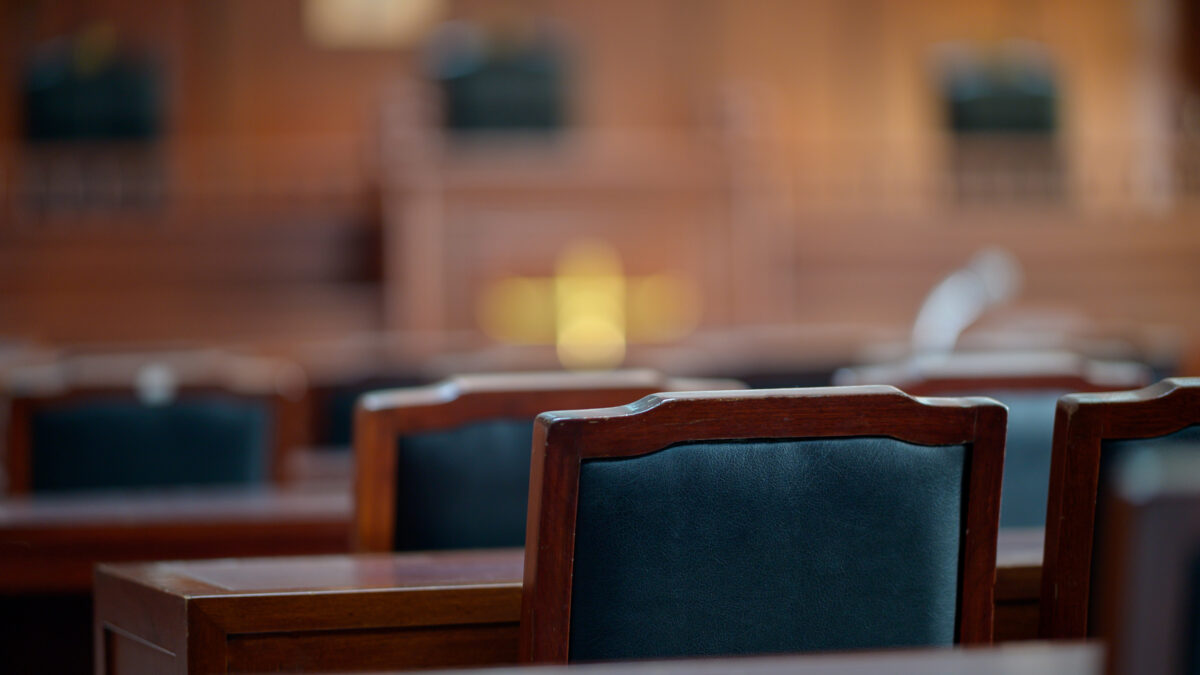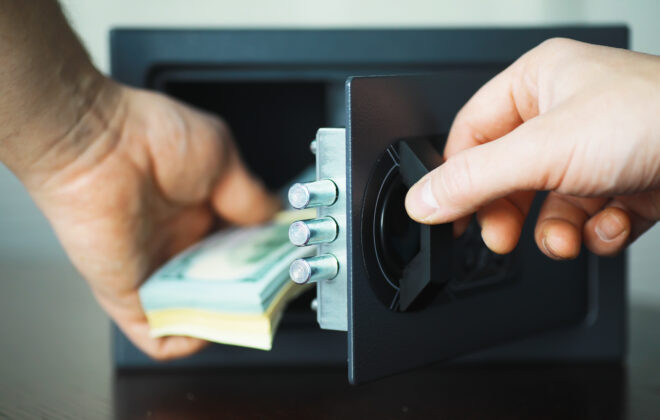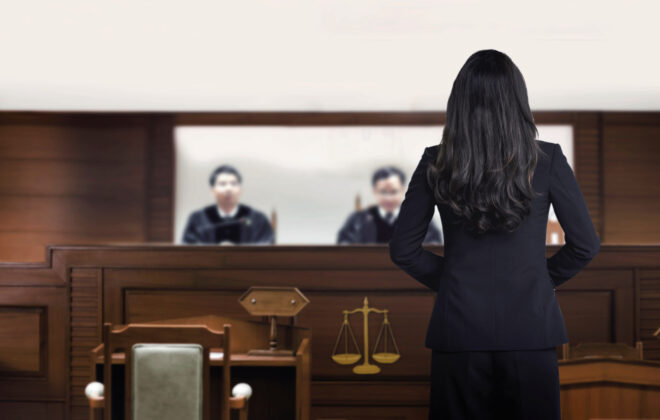How Does California’s Security Deposit Law – Civil Code § 1950.5 – Change in 2024, 2025, & Beyond?
Nearly every tenancy in California requires the tenant to furnish a security deposit in exchange for moving into the rental premises. Although usually an afterthought during lease negotiations and most definitely not given much thought at all during the tenancy itself, security deposits often become an animating force during landlord-tenant disputes upon the tenancy’s cessation. Recently, the California Legislature passed, and the California Governor signed into law SB 611, which makes several critical alterations and updates to California Civil Code section 1950.5, which this article will refer to as the California Security Deposit Law. This article provides a concise review as to how California’s Security Deposit Law is set to update in 2025.
What is a Security Deposit?
A security deposit is defined as, “any payment, fee, deposit, or charge imposed at the beginning of the tenancy to reimburse the landlord for costs associated with processing a new tenant or imposed as an advanced payment of rent, used or to be used,” to cover:
- A California tenant’s rent default;
- Repair tenant damage to the unit beyond ordinary wear and tear;
- Clean the unit after the tenant moves out to return the unit to the same level of cleanliness it was at the tenancy’s inception;
- To remedy future tenant defaults under the lease to restore, replace, or return rental property where a lease provision for this exists and the defaults are not ordinary wear and tear. California Civil Code § 1950.5(b).
Please note that a tenancy commenced on or before January 1, 2023 cannot be charged for cleaning under this law.
What Constitutes Ordinary Wear & Tear Under California Law?
As stated above, a tenant cannot be charged for ordinary wear and tear. Ordinary wear and tear can be thought of as normal unit deterioration when used for its intended purpose. One court defines ordinary wear and tear as contemplating, “that deterioration will occur by reason of time and use in spite of ordinary care for its preservation.” Connell v. Brownstein-Louis Co., 86 Cal. App. 610 (1927). The extent of ordinary wear and tear my differ depending on the length of the tenancy. Common examples of ordinary wear and tear include, but are not limited to, faded tiles, worn enamel in bathtub, cracked glazing throughout the unit, worn carpet usually due to age, cracked, chipped, or faded paint, and worn toilet flappers.
How Does SB 611 Update California’s Security Deposit Law for Veteran Tenants?
Presently, California’s Security Deposit Law limits security deposits to two (2) times the monthly rent for unfurnished units and three (3) times the monthly rent for furnished units. California Civil Code § 1950.5(c)(1). These limitations are each one (1) multiple lower for service members, as defined by Military and Veterans Code section 400, one (1) times the monthly rent for unfurnished units and two (2) times the monthly rent for furnished units). However, service members with poor credit or a history of damaging prior rental units the default limitations apply, and not the reduced service member limitations. In 2024, 2025, and beyond, service member tenants with greater transparency by requiring landlords to specify, in the written lease agreement, why the service member tenant is charged a higher security deposit amount. California Civil Code § 1950.5(c)(4). But, the landlord must return the additional higher security deposit amount to the service member tenant within six (6) months of tenancy if the service member is not in arrears for any rent due during that period. Id. The written lease must also specify this date. Id.
How Does SB 611 Limit Repair Costs Deducted From the California Tenant’s Security Deposit Principal?
Since a security deposit is money held to reimburse a landlord at the end of a tenancy in the event that a California tenant destroys or damages the rental unit, disputes relating to repair and restoration costs may occur. In 2024, 2025, & beyond, California’s Security Deposit law will include an express provision limiting repair and restoration works to, “a reasonable amount necessary to restore the premises back to the condition it was in at the inception of the tenancy…”. California Civil Code § 1950.5(e)(2)(B). This solidifies the often useful defense of excessive repair costs.
How Does SB 611 Impact Security Deposit Deductions for Carpet Cleaning?
Carpet cleaning costs are often foisted onto California tenants with traditionally excessively inflated costs. SB 611 changes this by prohibiting landlords from charging California tenants for carpet cleaning, professional or otherwise, unless, “reasonably necessary to return the premises to the condition it was in at the inception of the tenancy…”. California Civil Code § 1950.5.(e)(1)(C). With the passage of SB 611, a de facto presumption against carpet cleanings, professional or otherwise, for security deposit deductions exists as the presumed default in California.
How Does SB 611 Prevent “Gotcha,” or, “Surprise,” Security Deposit Deductions After A California Tenant Vacates Their Home?
SB 611 updates California Civil Code section 1950.5 to include a provision seeking to limit landlords from imposing, “gotcha,” or “surprise” deductions onto tenants after they vacate their home. The reformed law provides that where the landlord and tenant inspect the property after the tenancy, the landlord cannot impose a security deposit deduction for unobscured repairs or cleanings not identified in the initial itemized statement tendered to the tenant. California Civil Code § 1950.5(f)(4).
Please note that this provision does not apply where a California tenant is terminated pursuant to California Code of Civil Procedure section 1161 (2), (3), or (4). California Civil Code § 1950.5(e)(7).
When Does the California Security Deposit Law Require My Landlord Photograph My Home?
With the advent of camera phones and the proliferation of smartphones, photographic evidence is as accessible as it is assistive. In recognition of their widespread adoption, the California Legislature requires landlords to take photographs of the rental premises before or at the tenancy’s inception. California Civil Code § 1950.5(g)(1). Further, the law requires landlords to take photographs of the rental premises, “within a reasonable time after the [tenant vacates], but [before] any repairs or cleanings for which the landlord will make a deduction from or claim against the security deposit…”. California Civil Code § 1950.5(g)(2). Further, the law requires the landlord to take photographs after the completion of said repairs and cleanings. Id.
Further, where the landlord actually deducts from a California tenant’s security deposit pursuant to California Civil Code section 1950.5, the landlord must provide the photographs they took along with a written explanation of the cost of the allowable repairs or cleanings. California Civil Code § 1950.5(h)(2)(D). They may do so by mail, email, computer flash drive, or by providing a link where the photographs are accessible to the California tenant. Id.
May Landlords Impose Security Deposit Deductions When Failing to Comply with the California Security Deposit Law in Bad Faith?
No. The updates to California Civil Code section 1950.5 prohibit landlords from imposing security deposit deductions on California tenants when failing to comply with the California Security Deposit Law in bad faith. California Civil Code § 1950.5(h)(7).
These updates to California Civil Code section 1950.5 are already effective, or become effective on January 1, 2025, April 1, 2025, or July 1, 2025. For further details, consult with an attorney.
Related Posts
Categories
- Agoura Hills
- Alameda
- Albany
- Alhambra
- Aliso Viejo
- Alpine
- Alpine Heights
- Altadena
- American Canyon
- Anaheim
- Antioch
- Aptos
- Arcadia
- Ashland
- Atascadero
- Atherton
- Avocado Heights
- Azusa
- Baldwin Park
- Banning
- Barstow
- Bay Point
- Beaumont
- Bellflower
- Belmont
- Benicia
- Berkeley
- Beverly Hills
- Bloomington
- Bodega Bay
- Bonita
- Bradbury
- Brea
- Breach of the Covenant of Quiet Enjoyment
- Breach of the Warranty of Habitability
- Brentwood
- Brisbane
- Buena Park
- Burbank
- Burlingame
- Calabasas
- Calexico
- California Rent Control
- California Tenants
- Calimesa
- Calistoga
- Camarillo
- Campbell
- Canyon Lake
- Capitola
- Carlsbad
- Carmel-By-The-Sea
- Carpinteria
- Carson
- Casa De Oro-Mount Helix
- Castro Valley
- Castroville
- Cathedral City
- Cerritos
- Charter Oak
- Cherryland
- Chino
- Chino Hills
- Chula Vista
- Citrus
- City of Industry
- Claremont
- Coachella
- Colma
- Colton
- Commerce
- Compton
- Concord
- Corona
- Coronado
- Coronita
- Corte Madera
- Costa Mesa
- Cotati
- Crockett
- Culver City
- Cupertino
- Daly City
- Dana Point
- Danville
- Del Mar
- Desert Hot Springs
- Diamond Bar
- Discovery Bay
- Dixon
- Drawbridge
- Duarte
- Dublin
- Duncans Mills
- East Compton
- East Hemet
- East Los Angeles
- East Palo Alto
- East Whittier
- El Cajon
- El Centro
- El Cerrito
- El Monte
- El Segundo
- El Sobrante
- Elk Grove
- Emeryville
- Encinitas
- Fairfield
- Fairview
- Fontana
- Forestville
- Foster City
- Fountain Valley
- Fremont
- Fullerton
- Garden Grove
- Gardena
- Gilroy
- Glendale
- Glendora
- Goleta
- Grand Terrace
- Graton
- Greenfield
- Grossmont
- Hacienda Heights
- Half Moon Bay
- Hawthorne
- Hayward
- Healdsburg
- Hemet
- Hercules
- Hermosa Beach
- Hespira
- Highland
- Home Gardens
- Huntington Beach
- Huntington Beach Tenants
- Imola
- Imperial Beach
- Indio
- Inglewood
- Irvine
- Irwindale
- Jamul
- Jenner
- Junk Fees
- Jurupa Valley
- Kellogg
- Kensington
- Kentfield
- La Conchita
- La Habra
- La Honda
- La Mesa
- La Mirada
- La Verne
- Ladera Ranch
- Lafayette
- Laguna Beach
- Laguna Niguel
- Lake Elsinore
- Lake Forest
- Lakeside
- Lakewood
- Lancaster
- Landlord Entry
- Larkspur
- Lathrop
- Lawndale
- Lemon Grove
- Livermore
- Lodi
- Loma Linda
- Lomita
- Lompoc
- Long Beach
- Los Alamitos
- Los Alamos
- Los Altos
- Los Altos Hills
- Los Angeles
- Los Berros
- Los Gatos
- Lynwood
- Lynwood
- Malibu
- Manhattan Beach
- Manteca
- Marin City
- Marina
- Marina Del Rey
- Martinez
- Maywood
- Menifee
- Menlo Park
- Mentone
- Middleton
- Mill Valley
- Millbrae
- Milpitas
- Monrovia
- Montclair
- Monte Rio
- Montebello
- Montecito
- Monterey
- Monterey Park
- Moraga
- Morgan Hill
- Morro Bay
- Mountain House
- Mountain View
- Murrieta
- Napa
- National City
- Newark
- Newport Beach
- Nipomo
- Norco
- North Tustin
- Norwalk
- Novato
- Oak Park
- Oakland
- Oceano
- Oceanside
- Ontario
- Orange
- Orcutt
- Orinda
- Owner Move-In
- Oxnard
- Pacific Grove
- Pacifica
- Palm Desert
- Palm Springs
- Palmdale
- Palo Alto
- Palos Verdes Estates
- Paramount
- Pasadena
- Paso Robles
- Penngrove
- Perris
- Petaluma
- Pico Rivera
- Piedmont
- Pinole
- Pismo Beach
- Pittsburg
- Pleasant Hill
- Port Hueneme
- Portola Valley
- Ramona
- Rancho Cucamonga
- Rancho Mirage
- Rancho Palos Verdes
- Rancho San Diego
- Rancho Santa Margarita
- Redlands
- Redondo Beach
- Redwood City
- Release of Claims
- Rialto
- Richmond
- Riverside
- Rodeo
- Rohnert Park
- Rosemead
- Rowland Heights
- Sacramento
- Salinas
- San Anselmo
- San Bernardino
- San Bruno
- San Carlos
- San Clemente
- San Diego
- San Dimas
- San Francisco
- San Jose
- San Juan Capistrano
- San Leandro
- San Lorenzo
- San Luis Obispo
- San Marcos
- San Marino
- San Martin
- San Mateo
- San Pablo
- San Pasqual
- San Pedro
- San Rafael
- San Ramon
- Sand City
- Santa Ana
- Santa Barbara
- Santa Clara
- Santa Clarita
- Santa Cruz
- Santa Maria
- Santa Monica
- Santa Rosa
- Santee
- Saratoga
- Sausalito
- Seal Beach
- Seaside
- Sebastopol
- Security Deposit
- Sewage Flood
- Sheridan
- Sierra Madre
- Signal Hill
- Simi Valley
- Solana Beach
- Soledad
- Sonoma
- South Gate
- South Pasadena
- South San Francisco
- South San Jose Hills
- South Whittier
- Spring Valley
- St. Helena
- Stanton
- Stinson Beach
- Stockton
- Suisun City
- Sunnyvale
- Temecula
- Temple City
- Thousand Oaks
- Tiburon
- Torrance
- Tracy
- Tustin
- Uncategorized
- Union City
- Unlawful Detainer
- Upland
- Valle Vista
- Vallejo
- Venice
- Ventura
- Victorville
- Villa Park
- Vista
- Walnut
- Walnut Creek
- Walnut Park
- Watsonville
- West Hollywood
- West Sacramento
- West San Dimas
- Westlake Village
- Westminster
- Whittier
- Wildomar
- Windsor
- Woodside
- Yorba Linda
- Yucaipa
- Zee Estates
- Zzyzx




